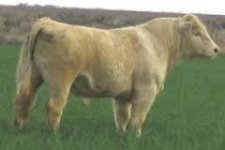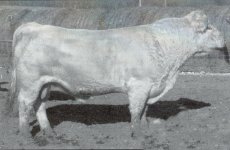librarian
Well-known member
This is an interesting white paper. http://beefmagazine.com/cow-calf/relationship-between-cow-size-production
New to me was the information that,
“Another source of information on mature cow size weights comes from actual research data from USDA’s Germplasm Evaluation Program. They conducted a direct, head-to-head comparison of nine sire breeds, all representing the character of those sire breeds when bred to common genetic resource cows and allowed to grow to full genetic maturity, and weighed at five years old as a measure of mature weight,” Olson explains.
The average cow size across all breeds was 1,390 lbs., with less than 100 lbs. separating the heaviest and lightest breeds. Herefords came in heaviest, at 1,419 lbs., followed by Angus at 1,410 lbs., then Red Angus at 1,409 lbs. In the middle were Simmental cows at 1,404 lbs., and the lightest three breeds were Gelbvieh at 1,323 lbs., Limousin at 1,391 lbs. and Charolais at 1,371 lbs."
New to me was the information that,
“Another source of information on mature cow size weights comes from actual research data from USDA’s Germplasm Evaluation Program. They conducted a direct, head-to-head comparison of nine sire breeds, all representing the character of those sire breeds when bred to common genetic resource cows and allowed to grow to full genetic maturity, and weighed at five years old as a measure of mature weight,” Olson explains.
The average cow size across all breeds was 1,390 lbs., with less than 100 lbs. separating the heaviest and lightest breeds. Herefords came in heaviest, at 1,419 lbs., followed by Angus at 1,410 lbs., then Red Angus at 1,409 lbs. In the middle were Simmental cows at 1,404 lbs., and the lightest three breeds were Gelbvieh at 1,323 lbs., Limousin at 1,391 lbs. and Charolais at 1,371 lbs."


